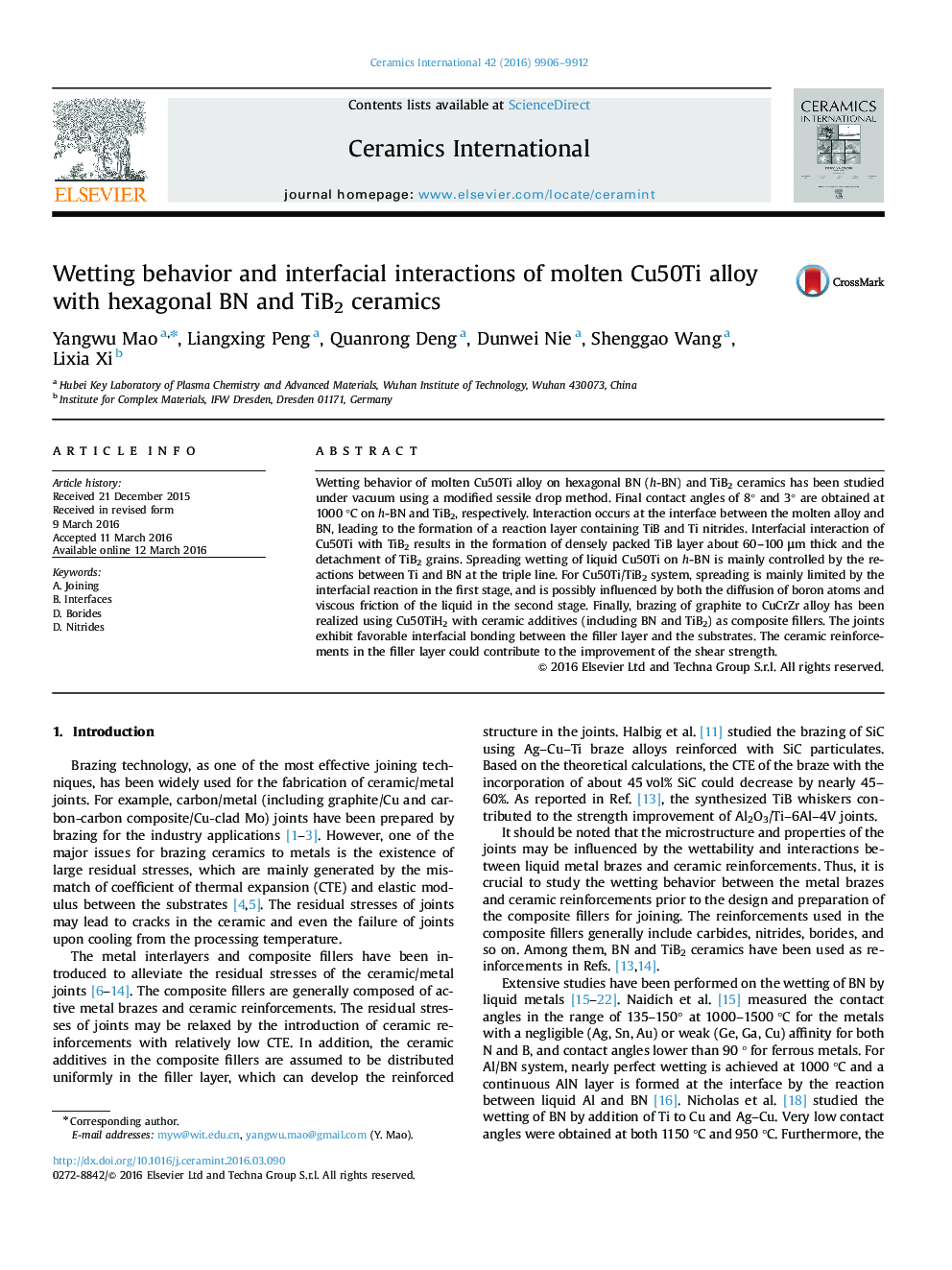| Article ID | Journal | Published Year | Pages | File Type |
|---|---|---|---|---|
| 1459071 | Ceramics International | 2016 | 7 Pages |
Wetting behavior of molten Cu50Ti alloy on hexagonal BN (h-BN) and TiB2 ceramics has been studied under vacuum using a modified sessile drop method. Final contact angles of 8° and 3° are obtained at 1000 °C on h-BN and TiB2, respectively. Interaction occurs at the interface between the molten alloy and BN, leading to the formation of a reaction layer containing TiB and Ti nitrides. Interfacial interaction of Cu50Ti with TiB2 results in the formation of densely packed TiB layer about 60–100 μm thick and the detachment of TiB2 grains. Spreading wetting of liquid Cu50Ti on h-BN is mainly controlled by the reactions between Ti and BN at the triple line. For Cu50Ti/TiB2 system, spreading is mainly limited by the interfacial reaction in the first stage, and is possibly influenced by both the diffusion of boron atoms and viscous friction of the liquid in the second stage. Finally, brazing of graphite to CuCrZr alloy has been realized using Cu50TiH2 with ceramic additives (including BN and TiB2) as composite fillers. The joints exhibit favorable interfacial bonding between the filler layer and the substrates. The ceramic reinforcements in the filler layer could contribute to the improvement of the shear strength.
